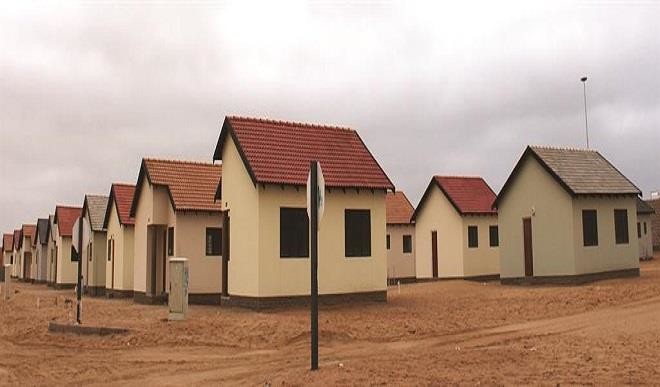Housing deficit: Firm provides eco-friendly, affordable solutions
In a bid to address the 22 million housing gap in Nigeria, a construction and real estate firm, BITEK Construction and Energetics Limited, is set to use clay materials to provide affordable, durable and eco-friendly houses for Nigerians. BITEK, which is partnering Russian engineers who will deploy the technology which will be used in excavating […]

In a bid to address the 22 million housing gap in Nigeria, a construction and real estate firm, BITEK Construction and Energetics Limited, is set to use clay materials to provide affordable, durable and eco-friendly houses for Nigerians.
BITEK, which is partnering Russian engineers who will deploy the technology which will be used in excavating clay, processing it into BITEK blocks and building the houses, is set to commence operations in June.
The Director of BITEK, Chief Ben Gbade Ojo, in an interview with Daily Trust, said the new technology ensureds precision in producing the blocks, reduceds waste drastically and cuts cost.
Chief Ojo said the company would roll out a 10-year housing development scheme that would be successful and address the housing problems in the country.
He said the company would partner the Federal Ministry of Works and Housing and states like Lagos, which have acute housing problems, to arrest the trend of mega cities deteriorating to slums.
He said, “Our towns and cities have continued to degenerate into slums, while millions of Nigerians grapple with difficulties in building their own homes. The result is that Nigeria, Africa’s largest economy, continues to be among countries with the lowest home-ownership rates, less than 20 per cent, even in Sub-Saharan Africa.
“The high cost of building in Nigeria has been the chief cause of the mounting housing deficit being experienced. Incidentally, this affordability issue also confronts public and private organisations.”
Ojo emphasised that the raw material, a fine textured clay, which according to him, is abundant all over the country, would be used for constructing the BITEK wall blocks, roofing sheets and ceiling, and stressed that a massive factory would be set up, which would be a one-stop shop for innovative housing solution.
He added that because of the technology and the raw material, the houses would be cheaper than the normal brick and mortar houses.
He described the taking off of the house-producing factory as a revolution in the real estate subsector, and stressed that since the BITEK blocks would use less cement, less labour, wastage would be curtailed.
Also, the duration of building will be shorter, as according to him, a three-bedroom bungalow could be completed in six weeks, from foundation to roofing and painting and could be sold for N3.5m.
Chief Ojo further explained that, “Tongue-and-groove structural insulating blocks from coarse-pored lightweight expanded clay concrete are designed for single-row laying with an inside seam. They have a finished front surface and an internal layer.
“The outer-facing side of the block has a textured surface that imitates brick, natural stone and surface relief designs. The inner face of the block is smooth and ready for finishing.
“These blocks are produced using continuous vibratory casting with the outer side facing down in order to get the right texture.”
He assured that BITEK’s plan to build 22 million houses would be successful if mortgage banks were recapitalised to fluidity of N25bn and above.
Daily Trust also learnt that the blocks’ strength is M75 and M10 for outer and inner-facing layers respectively, while freeze-thaw resistance is F75.
Our reporter also gathered from the Russian partners that the blocks are fire and water-resistant, thus withstanding the wear and tear of natural elements on property.
The Russians added that Nigeria was just the second country in the world the technology would be deployed in.
Head of the Russian partners, Dr. Valentine Boyko, said, “Thanks to the tongue-and-groove system, the inside seam and the constituents: block, cement and expanded clay, the material is highly fireproof; even when laying it with polyurethane foam. When the wall was tested for fire resistance in a four-hour period at a temperature of 1200C in the lab, the temperature of the outer surface amounted to 40C.”
